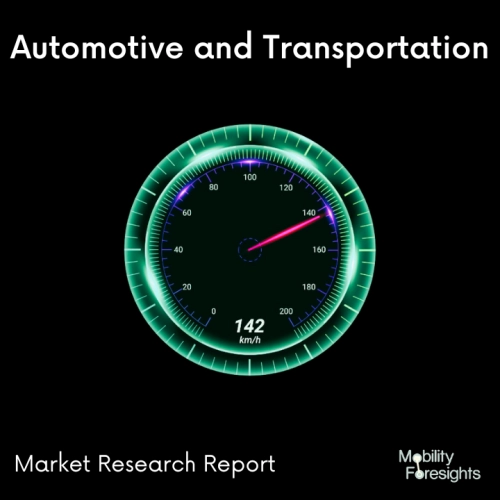
- Get in Touch with Us

Last Updated: Apr 25, 2025 | Study Period: 2022-2030
A fuel cell is an electrochemical device that uses two redox processes to transform the chemical energy of a fuel (typically hydrogen) and an oxidising agent into electrical energy. In contrast to most batteries, fuel cells require a constant supply of fuel and oxygen (often from the air) to sustain the chemical reaction.
In contrast, a battery typically derives its chemical energy from materials that are already present in the battery. As long as fuel and oxygen are available, fuel cells can constantly create electricity.The hydrogen-oxygen fuel cell was created more than a century after the first fuel cell was used commercially.
Commercial, industrial, and residential facilities, as well as those located in distant or inhospitable places, use fuel cells as their primary and backup power source. Forklifts, cars, buses, trains, boats, motorbikes, and submarines are all examples of fuel-cell vehicles that employ them.
In addition to cutting-edge modelling and simulation tools for fuel cells and electrolysers, the new Fuel Cell Media Interface Unit & Electrolyser Module offers engineers general-purpose tools for accurate fluid flow properties and thorough electrochemical simulations.
The new module allows for the analysis and optimisation of hydrogen vehicles and energy storage technology by incorporating charge transport, electrode reactions, thermodynamics, gas-phase diffusion, porous media flow, and two-phase flow.

The Global Fuel cell media interface unit market accounted for $XX Billion in 2021 and is anticipated to reach $XX Billion by 2030, registering a CAGR of XX% from 2022 to 2030.
The impact of COVID-19 has been unprecedented and startling, with positive demand shocks for fuel cell media interface units and fuel cell technology occurring in all locations as a result of the pandemic.
The sudden escalation of the worldwide health catastrophe brought on by the novel coronavirus or COVID-19 pandemic has had a detrimental impact on the financial health of several industries and nations. Due to the suspension of industrial operations that generate revenue, several countries around the world have had investment deficits.
The epidemic has also had a substantial impact on a number of small and medium-sized businesses, causing a number of issues like cash flow and a shortage of qualified personnel.
| Sl no | Topic |
| 1 | Market Segmentation |
| 2 | Scope of the report |
| 3 | Abbreviations |
| 4 | Research Methodology |
| 5 | Executive Summary |
| 6 | Introduction |
| 7 | Insights from Industry stakeholders |
| 8 | Cost breakdown of Product by sub-components and average profit margin |
| 9 | Disruptive innovation in the Industry |
| 10 | Technology trends in the Industry |
| 11 | Consumer trends in the industry |
| 12 | Recent Production Milestones |
| 13 | Component Manufacturing in US, EU and China |
| 14 | COVID-19 impact on overall market |
| 15 | COVID-19 impact on Production of components |
| 16 | COVID-19 impact on Point of sale |
| 17 | Market Segmentation, Dynamics and Forecast by Geography, 2022-2030 |
| 18 | Market Segmentation, Dynamics and Forecast by Product Type, 2022-2030 |
| 19 | Market Segmentation, Dynamics and Forecast by Application, 2022-2030 |
| 20 | Market Segmentation, Dynamics and Forecast by End use, 2022-2030 |
| 21 | Product installation rate by OEM, 2022 |
| 22 | Incline/Decline in Average B-2-B selling price in past 5 years |
| 23 | Competition from substitute products |
| 24 | Gross margin and average profitability of suppliers |
| 25 | New product development in past 12 months |
| 26 | M&A in past 12 months |
| 27 | Growth strategy of leading players |
| 28 | Market share of vendors, 2022 |
| 29 | Company Profiles |
| 30 | Unmet needs and opportunity for new suppliers |
| 31 | Conclusion |
| 32 | Appendix |